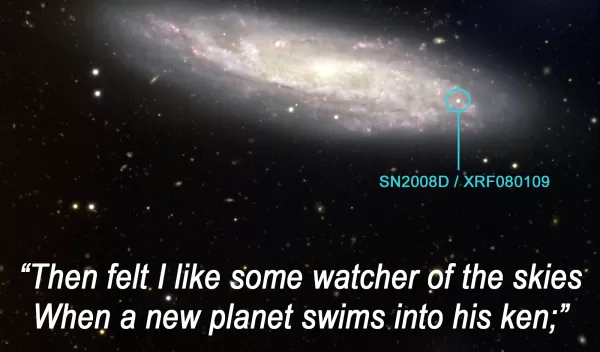
International Gemini Observatory Captures Birth of a Supernova
Astronomers have before observed the aftermath of spectacular stellar explosions known as supernovae. But last week researchers for the first time witnessed a star dying in real time.
While observing supernova 2007uy with the Swift X-ray Telescope, Alicia Soderberg and Edo Berger from Princeton University discovered a mysterious X-ray flash elsewhere in the galaxy NGC 2770, located about 90 million light years away. Within a few hours observatories around the world scrambled to study its light.
In a rapid sequence of events, the Gemini North telescope was able to capture and dissect the object's light in a set of optical spectra that contains the earliest spectrum ever obtained of a massive star ending its life in a supernova explosion outside of our galaxy's neighborhood.
"We were in the right place at the right time with the right telescope on January 9, and witnessed history," said Soderberg. "Thanks to the unique capabilities of the Swift satellite and the rapid response of the Gemini telescope, we were able to observe a star in the act of dying."
The result of this rapid response, following the Jan. 9, 2008, discovery, allowed Gemini to provide time-critical spectroscopic observations of the young supernova and the development of the explosion in a unique sequence of optical spectra using Gemini North telescope on Mauna Kea in Hawaii.
For more information, go to the Gemini Observatory Press Release.


